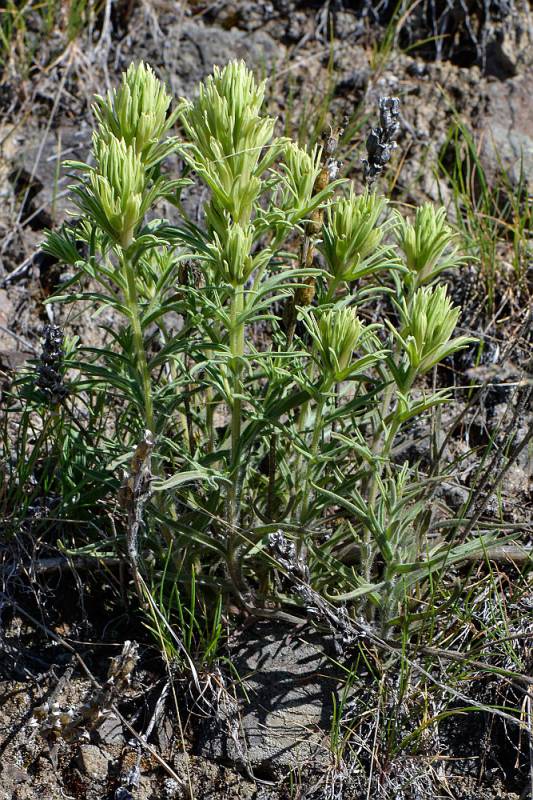|
Thompson's paintbrush
|
|
| Perennial herb; stems clustered, erect to ascending, 1-4 dm tall, hairy, often tinged with maroon. |
|
Lower leaves simple, linear; upper leaves narrow with 3-5 linear lobes; lightly hairy. Inflorescence leaves (bracts) yellowish-tinged. |
|
Calyx 12-25 mm long, maroonish in color, with 4 acute lobes at tip, cleft more deeply above and below than on sides. Corolla incospicuous, greenish, hidden within the more showy calyx, the galea (upper beak) short, the lower lip greater than 1/2 length of galea, scarcely pouched. Ovary superior, 2-celled. |
|
Many-seeded capsules. |
|
Plants found at higher elevations tend to be smaller, less pubescent and more glandular. |
|
|
|
|
Castilleja latifolia |
| Can be sufficiently separated from other Castilleja species in Washington by the combination of perennial habit, yellowish inflorescences, acute calyx tips with median clefts deeper than the lateral clefts, greenish corolla enclosed by the calyx (or nearly so), and close association with sagebrush. See also Castilleja cervina. |
|
| May-September |
|
| Dry sagebrush deserts to high mountain ridges. |
|
East of the Cascade summits in Washington; British Columbia south to Oregon.
|
|
| Native |
|
| Not of concern |
|
C. ambigua, C. attenuata, C. cervina, C. chambersii, C. cryptantha, C. cusickii, C. elmeri, C. exserta, C. hispida, C. levisecta, C. litoralis, C. lutescens, C. miniata, C. minor, C. parviflora, C. rupicola, C. suksdorfii, C. tenuis, C. victoriae |
C. ambigua, C. attenuata, C. cervina, C. chambersii, C. cryptantha, C. cusickii, C. elmeri, C. exserta, C. hispida, C. levisecta, C. litoralis, C. lutescens, C. miniata, C. minor, C. parviflora, C. rupicola, C. suksdorfii, C. tenuis, C. thompsonii, C. victoriae |
| |


